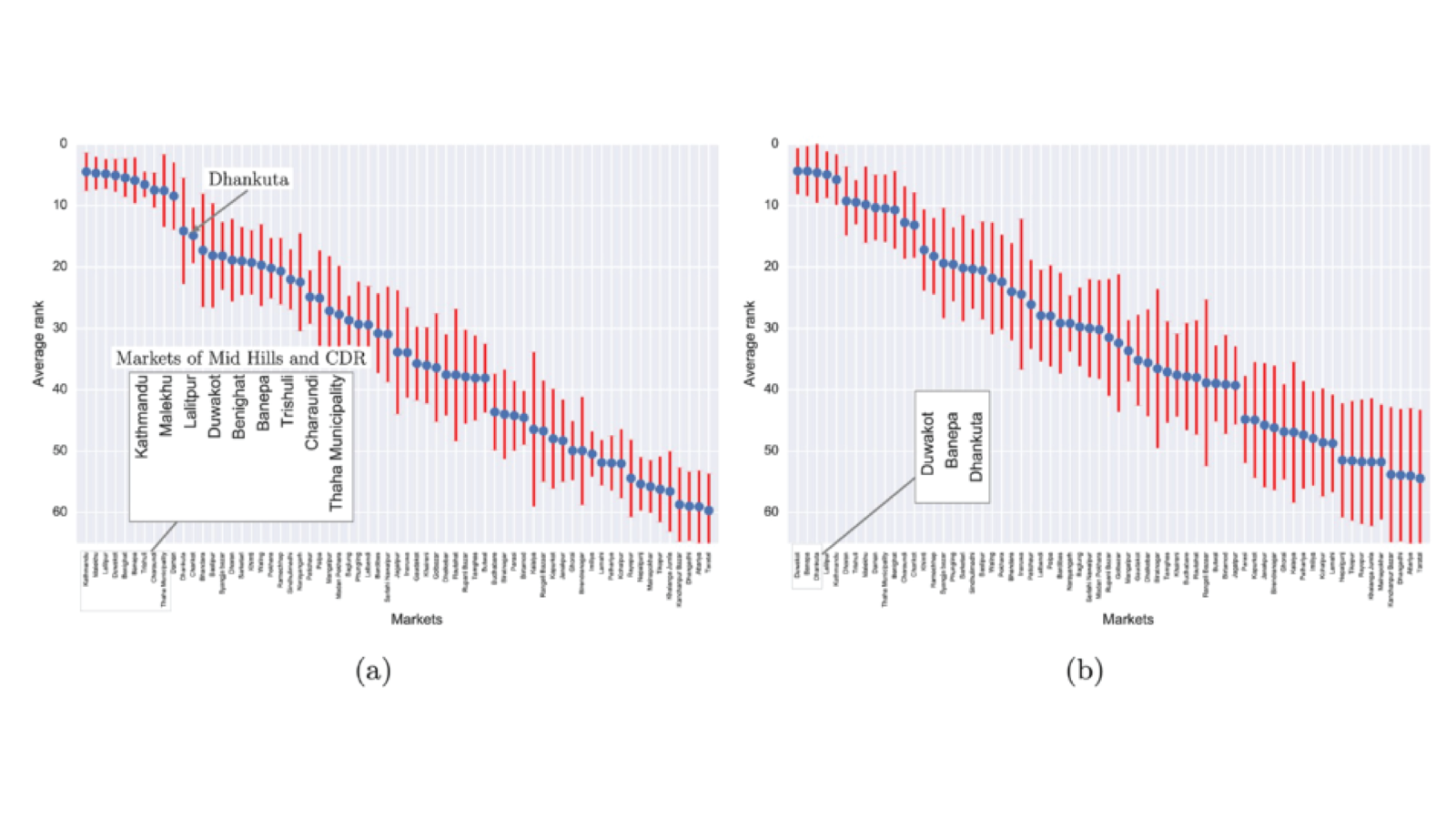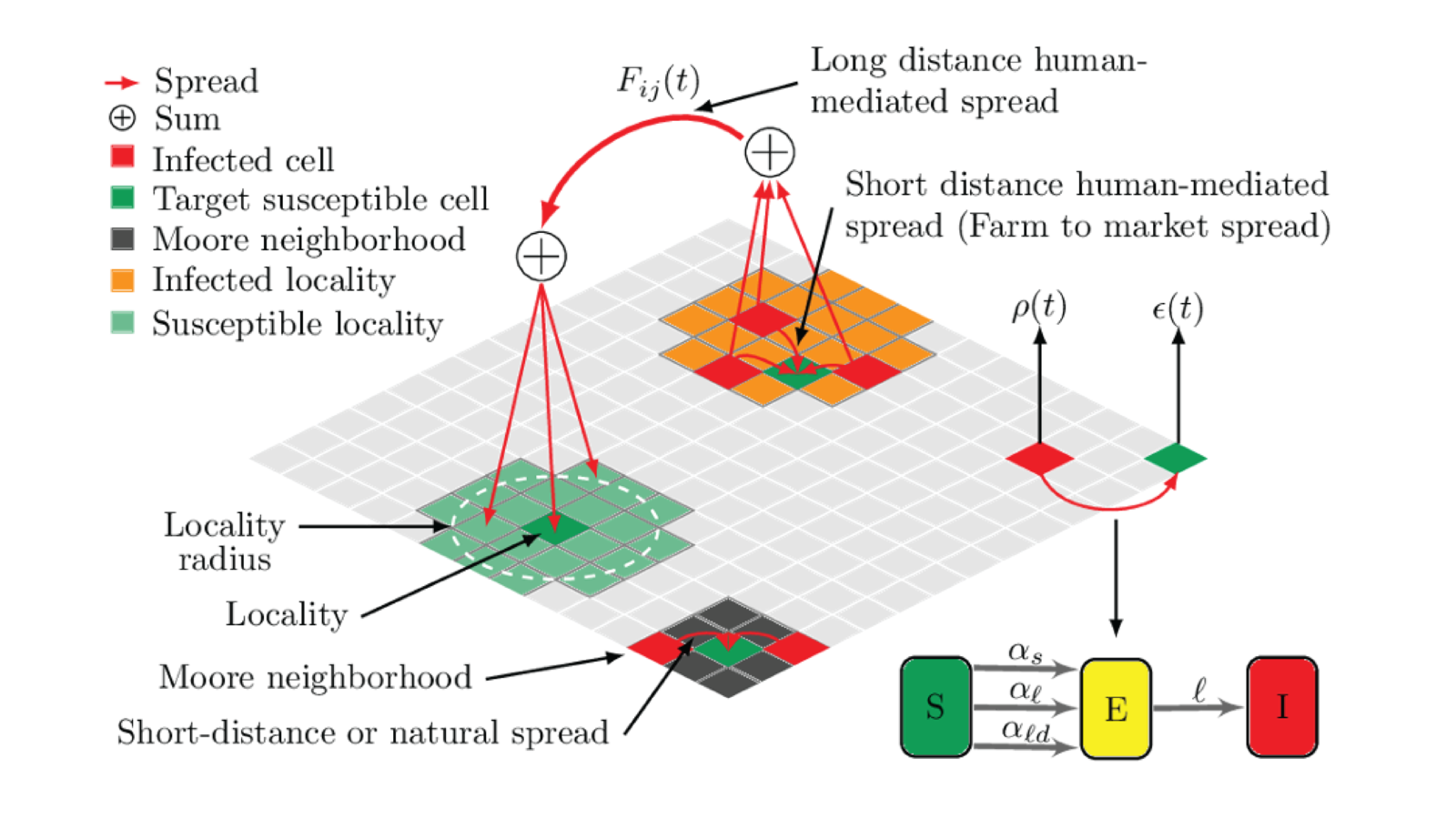This project develops computational models and simulation environments to study the spread and establishment of pests that affect major agricultural crops. Our approach not only considers the biological interactions of these organisms, but more importantly, the social and economic factors. It strives to provide a valuable tool for risk analysts, domain experts and policy makers for testing counterfactual scenarios, assessing and forecasting the extent of the damage, and designing targeted monitoring and control measures to mitigate the spread of leafminers. This project provides a unique opportunity to apply big data techniques, network science, simulation science, and machine learning techniques to a high-impact application.
We developed a framework to study the spatio-temporal spread of invasive species as a multi-scale propagation process. We account for climate, biology, seasonal production, trade and demographic information. Machine learning techniques were used in a novel manner to capture model variability and analyze parameter sensitivity.
We applied the framework to understand the spread of Tuta absoluta, in South and South-east Asia, a region at the frontier of the pest’s current range.
Analysis with respect to historical invasion records suggests that the pest can quickly expand its range through domestic city-to-city vegetable trade. Our models forecast that—without mitigation—within five to seven years Tuta absoluta will invade all major vegetable-growing areas of mainland Southeast Asia. Monitoring high-consumption areas can help in early detection, and targeted interventions at major production areas could effectively reduce the rate of spread. We also studied the long-term establishment potential of the pest and its economic impact on Nepal, which could range from $17–25 million in USD.
Figures


Figure 1. Evaluating the spread model using Bayesian epidemic source inference framework for Nepal.
Figure 2. A Multi-pathway spread model concept.
Executive Director
Distinguished Professor in Biocomplexity, Biocomplexity Institute
Professor of Computer Science, School of Engineering and Applied Science






